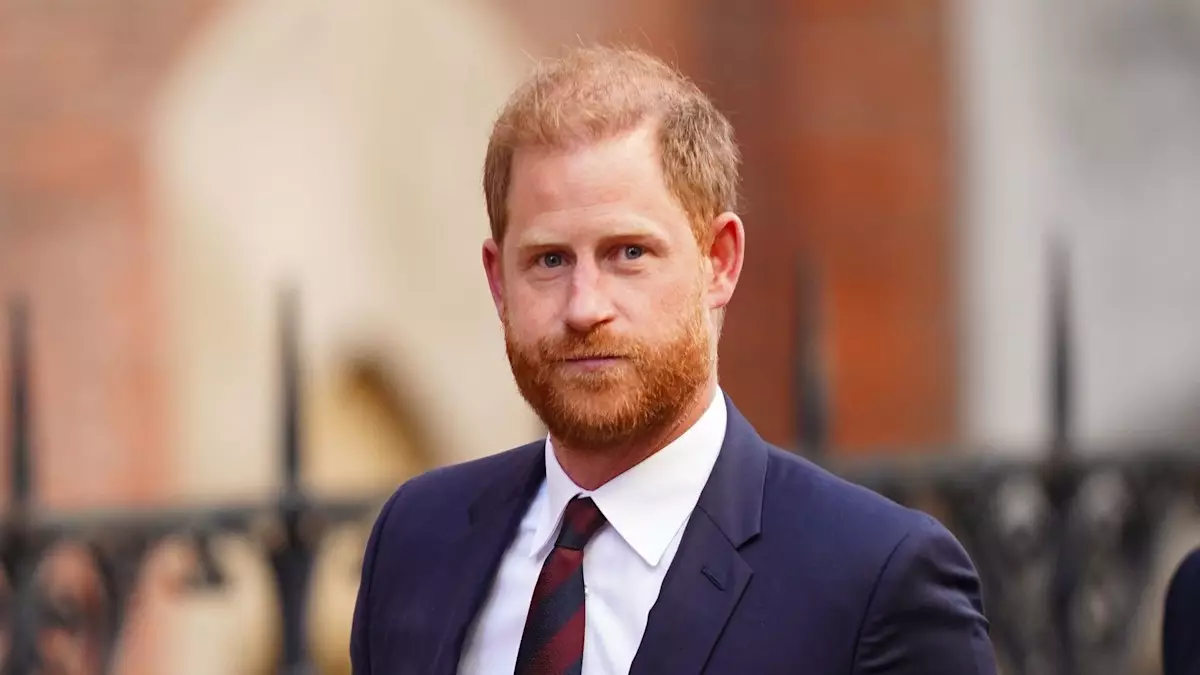In a high-profile legal battle that has captured media attention and public sentiment alike, Prince Harry, the Duke of Sussex, has shared the excruciating emotional toll of grappling with a security apparatus that he believes has failed him. In a candid admission, Harry conveyed to The Telegraph an overwhelming feeling of exhaustion, an emotion not often associated with a royal. His legal challenge against the Home Office’s decision to strip him of police protection is not just a matter of security; it embodies the complexities of his position in the royal hierarchy. The emotional resonance of this conflict is palpable: the very life of a royal is being examined under the harsh light of public scrutiny.
Harry’s assertion that his “worst fears” were validated by evidence presented during private hearings highlights a profound disconnect between the institution of the monarchy and the individual realities faced by its members. When one contemplates the enormity of one’s safety being exchanged for a “bespoke” security arrangement—an arrangement that feels inadequate in comparison to the royal protection he previously enjoyed—it begs the question: how does one balance the demands of royal duty with personal safety? This dilemma is at the heart of Harry’s legal challenge and speaks to broader themes of mental health and personal well-being that often remain unaddressed within royal circles.
Legal Battles and Institutional Resistance
The Duke’s legal battle carries profound implications that extend beyond the court chambers of the Royal Courts of Justice. Harry is challenging a ruling made by retired High Court judge Sir Peter Lane, who maintained that the Executive Committee for the Protection of Royalty and Public Figures (Ravec) acted lawfully when they restricted the Duke’s protection following his step back from royal duties in 2020. This institutional resistance raises questions about how decisions are made within the monarchy and whether they truly consider the emotional and physical safety of individuals involved.
The Home Office’s rationale centers on a case-by-case evaluation of risks, yet Harry’s situation casts doubt on this approach. The system appears detached from the human experience. The line drawn between being a member of the royal family and having access to essential security measures raises eyebrows—not merely within the palace but across public discourse. It is evident that each royal possesses a unique degree of vulnerability, and the failure to recognize this individuality could have dire consequences.
The Role of Public Perception
Public perception plays a significant role in this ongoing saga. The narrative propagated by Buckingham Palace has consistently emphasized a drive to support the Sussexes even as their specific needs remained overlooked. The Palace’s denials of Harry’s assertions regarding their motivations underscore the friction between the Duke and the institution. The duality of their existence—one as high-profile public figures and another as private individuals—complicates the analysis.
Harry’s claims that his security arrangements were ultimately aimed at preventing him and Meghan from residing outside of the UK, if accurate, raise larger questions about institutional control over personal lives. Is this paternalistic approach a protection strategy or a blatant attempt to stifle individual agency? The public is left to consider where the line lies between royal duty and personal autonomy.
A Personal Perspective on Safety
Through his legal challenge, Harry reminds us of the “human dimension” of this case, signifying the precarious balance of privilege and vulnerability that comes from being born into royalty. A poignant observation made by counsel Shaheed Fatima KC illustrates this very struggle: that there is a person behind the title whose life and security hang in the balance. This profound human aspect often gets eclipsed by media sensationalism, but it is precisely this nuance that adds layers to the narrative.
In his aspiration for safety, Prince Harry illuminates the lengths to which individuals must often go to reclaim a sense of control over their own lives. The melancholy that permeates his comments hints not just at his plight but at the urgency with which society must engage in discussions about mental health and personal safety. It forces us to confront uncomfortable truths about life’s inherent insecurities—particularly for those in the public eye, whose vulnerabilities are often obscured by their status.
This legal battle may be fraught with complexity, but at its core, it unlocks a vital dialogue about the intersections of institutional power, personal agency, and individual safety. Prince Harry’s journey towards a safer existence represents a broader cultural conversation about how we prioritize well-being against the backdrop of duty—an issue that resonates far beyond the walls of Parliament or the palaces of royalty.

